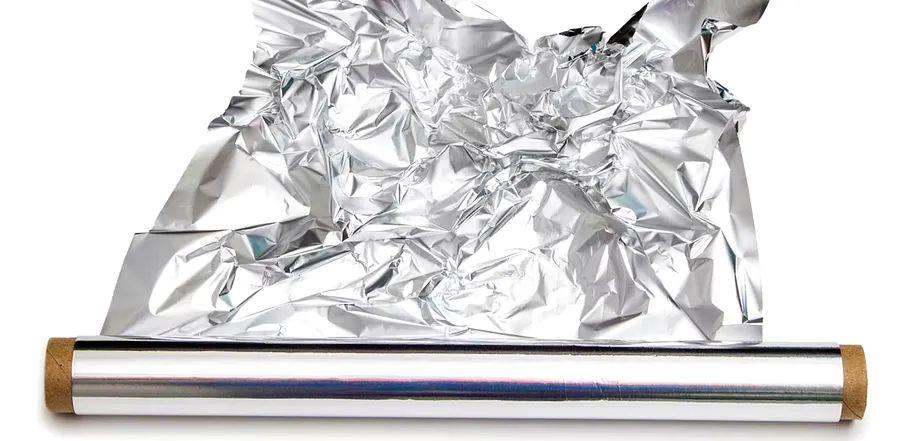Reynold's Finally Clears Up the Mystery: Here's What Each Side of Aluminum Foil Is Really For

Whether you're a casual cook or someone who spends hours crafting culinary masterpieces, you'll likely agree that aluminum foil (or 'tin foil') is one of the most multifunctional tools in the kitchen. Whether you're lining baking sheets, covering meat while roasting, or creating a pouch to cook or reheat leftovers, aluminum foil proves its usefulness in countless ways.
Used by 319 million Americans annually (according to a 2020 study), have you ever wondered why one side of aluminum foil is shiny while the other is dull? A viral social media video recently suggested that the side you use should depend on the specific task at hand. But is there any truth to this? Is one side intended for certain uses while the other is for something different? We reached out to experts to settle the debate once and for all.
Why One Side of Aluminum Foil Is Shiny
The two different finishes on the foil are a result of the manufacturing process, explains Lara Tiro, a food scientist and owner of the consulting firm Rebel Botanica in Vancouver. Tiro describes how large sheets of aluminum are passed through a series of rollers, which use heat and pressure to stretch and thin the metal, giving it its distinctive shiny and dull surfaces.
"The final step in the manufacturing process is known as cold-rolling, where two layers of foil are passed through rollers at the same time. This step further reduces the thickness and enhances the foil's strength and flexibility," explains Tiro. She adds that the shiny side of the foil results from contact with the polished steel rollers, while the dull side is the one that doesn’t come into contact with them.
Does It Really Matter Which Side of Aluminum Foil You Use?
In short, no. Since the shiny and matte sides are merely a byproduct of the foil’s interaction with the rollers, Tiro confirms that there’s no actual difference in the foil's composition on either side. Whether you use the shiny or dull side, it won't affect your food, whether you're using regular or heavy-duty foil.
To verify this, we checked in with the experts at Reynold's. According to their website, "With both standard and heavy-duty foil, it's perfectly fine to use either side for your food, so you can choose whether you prefer the shiny or dull side facing out."
Although the side of the foil doesn't alter the flavor or appearance of your food, Tiro recommends using heavy-duty foil for grilling and roasting. Its thicker construction provides extra strength, making it a better option for these cooking methods.
The One Exception to the Rule
While regular aluminum foil doesn’t require a specific side for cooking, the same isn’t true for non-stick foil. Tiro explains that regular foil doesn’t have non-stick properties, but many manufacturers add an FDA-approved coating to the dull side of non-stick foil. To benefit from this coating, foods should be placed on the dull side to ensure easier, cleaner removal of cooked items.
Reynold's offers a simple tip to remember which side of their non-stick aluminum foil should face up: "If you can read the text on the foil, you're using the right side."
When You Should Avoid Using Aluminum Foil
While aluminum foil is a reliable kitchen tool, it’s not always the best option for every cooking method or food type.
Avoid using aluminum foil to cover meat while brining. Tiro points out, "Although foil is great at blocking light and oxygen, it can react with salt-rich foods, leading to the formation of aluminum chloride crystals, which can result in a bitter taste."
Tiro also advises against using foil to line baking sheets when making cookies. "The bottoms of the cookies will cook faster than the rest," she notes. Additionally, don't rely on aluminum foil to cover or store leftovers, as it doesn't provide an airtight seal to keep food fresh.
Evaluation :
5/5



